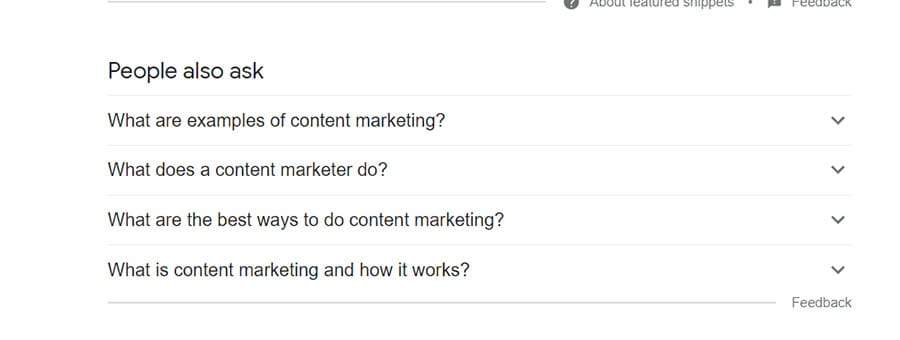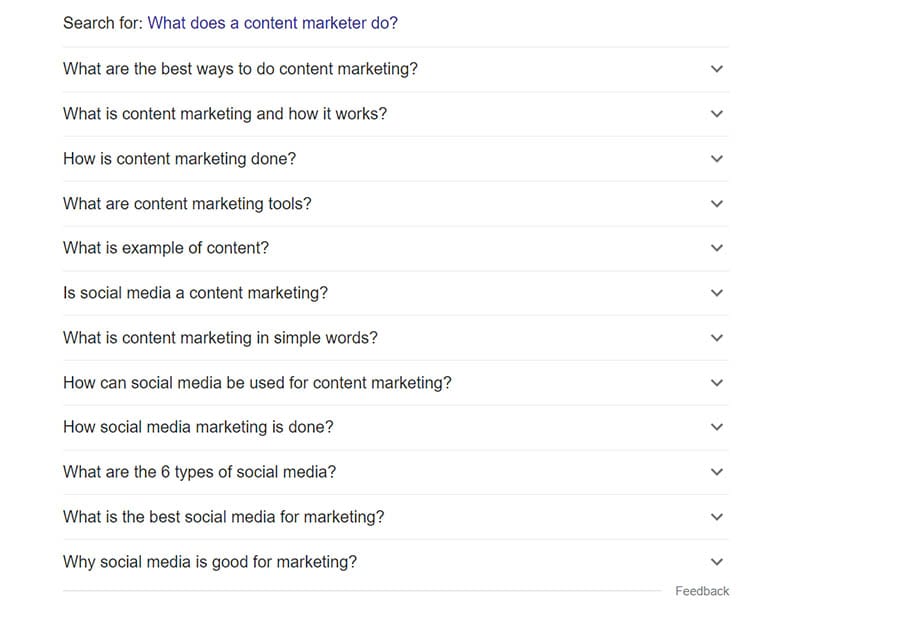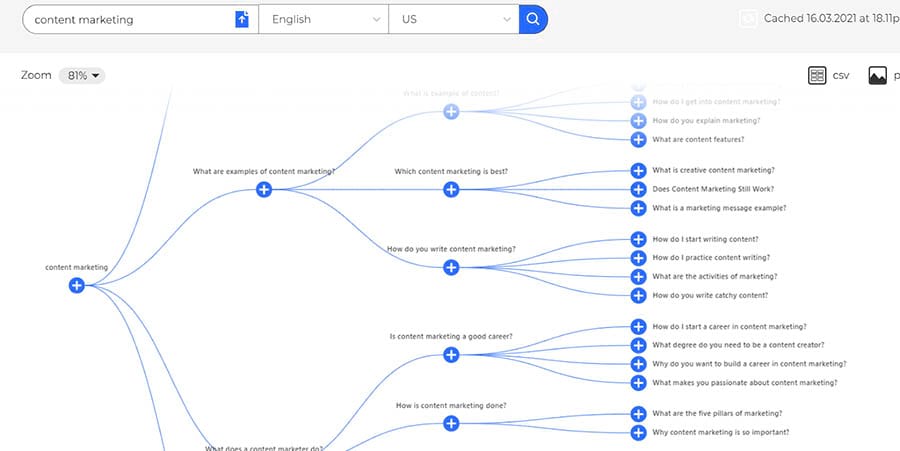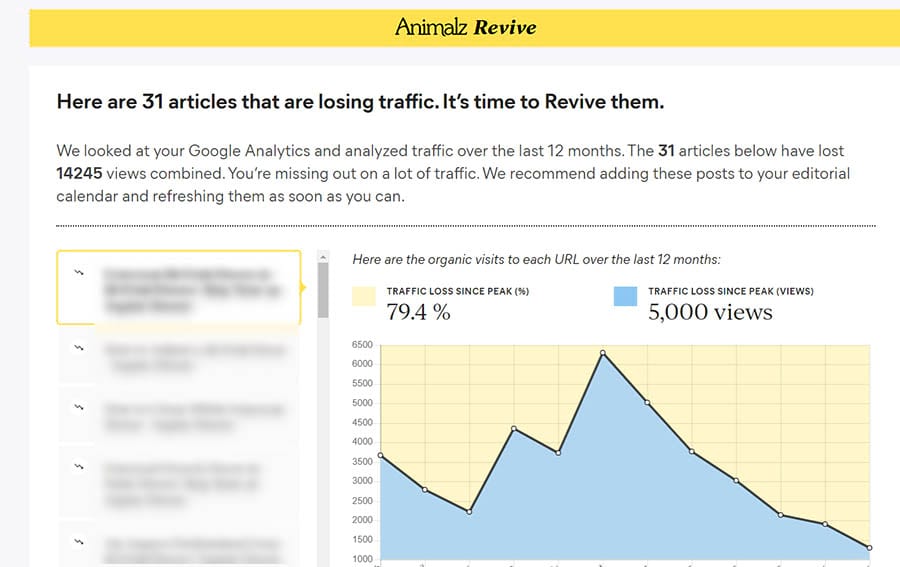So you have a website. You have listed all of your products and included details of your services. But nothing happens. Nobody visits and, consequently, nobody buys.
Obviously, you want more website visitors. All things being equal, more qualified traffic means more leads, customers, and revenue. But how do you generate more traffic on your new website?
And most importantly, how do you increase qualified traffic? In this post, I’m going to cover 30 different ways to get more website traffic to help drive new organic business growth. Some of these methods will help you better understand your audience. Ready to get started? Let’s drive more traffic to your business website and blog content.
How To Drive Traffic To Your New Website
Answer Niche-Specific Questions
No matter where your prospects are in the buying cycle, they will have questions that need to be answered. They can be at the top of the funnel (like “what is content marketing?”) Or lower (like “which content marketing tools are best for content planning?”)
By answering these questions, you are putting your business in front of potential customers, regardless of where they are in the buying cycle.
So how are you going to find the questions potential customers are asking?
Your first stop should be Google. Simply researching your topic will start to give you ideas. See the questions in the image below. Google provides the type of question you need to answer, right there in the search results.

These are People Ask Also boxes (or PAA boxes). Getting your content to appear on them is a sure way to boost website traffic. You will also find more and more questions to answer when you start clicking on these search results. Handy, huh?

All you need to do is start collecting this information and using it to inform your Q&A content.
And don’t worry, there are many ways to automate the collection of this data.
If you want to collect data directly from search results, you can use a plugin like SEO Minion. If you want to go a bit further, you can use a freemium tool like AlsoAsked or Answerthepublic.

Produce Evergreen Content
Now, let’s get this straight: we are not against seasonal content. If you sell a seasonal product or service, it makes sense to create seasonal content. But if you want to generate year-round traffic to your website, you must create evergreen content.
But what is evergreen content?
It’s pretty much what it says on the tin: it’s content that can drive traffic to your site all year long. There are fewer drops and spikes, resulting in more reliable and consistent traffic.
There are many types of evergreen content (and most of the topics and ideas can be found in the tools mentioned below), but these are some of the most successful formats.
- Procedural guides
- Questions and Answers and Frequently Asked Questions
- Step-by-step tutorials or processes
- definitive guides
- Product Reviews and Summaries
- training guides
One way to ensure that this type of persistent content continues to be successful is to update it regularly. Periodically review the content and make sure the tips are up-to-date and relevant. That way, you will continue to send traffic on your topic to your website year after year. It is the gift that continues to be offered!
Target The Right Keywords And Topics
One of the most effective and sustainable ways to drive traffic to your website is through SEO. Google itself states in its Economic Impact Report that SEO ROI is 5.3 times more valuable than paid.
Build Topic Clusters And Pillar Pages
Once you’ve identified your top keywords, strategically group them into topic groups. In short, content clusters organize your content into relevance groups. Create a single high-level content hub, called a pillar page, that leads to multiple subtopics. Taken together, topic groups are an amazing way to drive traffic to your website along the buyer’s journey.
Technical SEO
When exploring how to drive traffic to your website, the website architecture may not be the first thing that comes to mind. But it is very important. Technical SEO ensures that your site is as Google-friendly as possible. This means structuring your site so that Google understands what it is about and can efficiently crawl each URL.
First, submit an XML sitemap to help search engines find and index your content. Organize your pages in a logical structure that is relatively flat and easy for users to navigate. As much as possible, make all content accessible with three clicks.
A tool like Screaming Frog or ContentKing can help you detect and correct any tracking errors. It can also help you find and fix corrupted links.
Use canonical tags to help Google understand exactly which pages to crawl and avoid duplication errors. If you’ve changed the page URLs, make sure you have the proper 301 redirects in place.
Remember that Google prioritizes speed and will release a user experience update in the first half of 2021. So use web speed testing tools like Google PageSpeed Insights, Google Lighthouse, or Pingdom to uncover opportunities to improve page load time.
Also, when possible, implement structured data to increase the chances that your pages will appear in rich snippets.
Update Stagnant Content
What about the content you have created in the past? Losing traffic? Did it peak before seeing a slow decline?
Do not ignore it, you can give it the kiss of life with a little love, and that is much faster to do and cheaper to produce than other content.
There are several ways to identify stagnant content; the most obvious place to start is Google Analytics or Google Search Console. If the part has worked well in the past, it stands to reason that it can work well again.
A few tools have recently emerged to analyze this data for you. And anything that eliminates some of the manual labor is a huge benefit in our book. Two of the most popular are Revive and the content downgrade feature in ClickFlow.

Not all content marketing aims to create something new. You must be attentive to what you have created before. Sometimes it pays to look back and forward.
Consider Guest Posting
Didn’t Google once say that we “should stick a fork” in guest posting? Wasn’t “ready” a few years ago?
Well yes, but that doesn’t mean you shouldn’t consider it a tool to help promote your content; it is still a viable tactic when done right.
So what do you need to do?
Basically, you should try to guest post on good sites. But what is a good website? Well, I’m glad you asked.
Here are some things to keep in mind when choosing a site that you might want to guest post on.
- Does the website have a decent amount of traffic?
- Write primarily about your niche.
- Do you have respected or expert writers on your team or guest list?
- Does the site have many pages indexed by Google?
- Does the site have high social engagement metrics?
- Does the website match your target audience?
At the end of the day, when trying to identify and create a guest blogging strategy, you should look for quality over quantity. Google is good at spotting patterns, and if it thinks you’re trying to get around the system, you could run into trouble with powerful search engines.
Improve Your Google SERP Click Through Rate
Do you already have a lot of keyword-focused content? Then you can get more site traffic simply by improving click-through rates on search engine results pages (SERPs).
The higher your organic search rank, the higher your click-through rate and the more traffic you’ll get.
To find pages with poor CTR performance, use Google Search Console. Look for keywords and pages with a high number of impressions and a low number of clicks. Is the title tag aligned with the search intent? Rewrite titles and meta descriptions to improve keyword rankings and make them more attractive.
Use words that match the search intent and help users know that your page contains the information they are looking for. Look for ways to differentiate the message in your list from others on the page. When appropriate, use modifiers (“definitive,” “essential,” “unique,” etc.) to help you stand out in the SERPs.
Get a Keyword Research Tool
Numerous SEO tools can help you with keyword research (and you would find it difficult to do keyword research without a tool). The trick is to choose a tool that works for you (and fits your budget).
For years, the most widely used keyword search tool has been Google’s Keyword Planner. Unfortunately, Google didn’t seem to like this. The tool has been hacked and altered to the point that it is largely useless unless you are researching keywords specifically to advertise on Google, too bad because it’s free.
If you’re looking for the best keyword research tool on the market, we recommend Semrush! Its database includes more than two billion keyword opportunities. Furthermore, it also provides information on relevant keywords, related ads, product listings, and more.
Social Media
With billions of active users daily, social media is an obvious method of driving traffic to your website. This is especially true for your existing customers and fans.
When designing your social media strategy, there are a few important things to think about.
First, you need to know which platform your audience uses the most. If you are a B2B company, LinkedIn might be your best option. If you sell to millennials, Instagram is probably a solid option. Targeting GenZ? Then consider TikTok.
Second, it’s critical that you provide real value to your followers and engage with them regularly. You can’t just post links to your site and wait for people to come along. You need to understand what they think, actively connect with them, offer them unique content, respond to comments, answer their questions, etc.
Ready To Drive Traffic To Your Website?
Now that you have these tactics in your toolbox, you should be able to come up with a simple strategy to attract more people to your site. However, keep in mind that this is not a one-time exercise. You don’t even have to try everything at once or just use one tactic at a time.
Try something. See if it works. If you fail, stick around a bit longer, but bring something else to your list. And most importantly, make sure the technical aspects of your website work perfectly; if you need to upgrade your web host, for example, we have plans to fit any budget!
If you do, it won’t be long before you see a significant and steady increase in your site traffic. Catch that wave!
